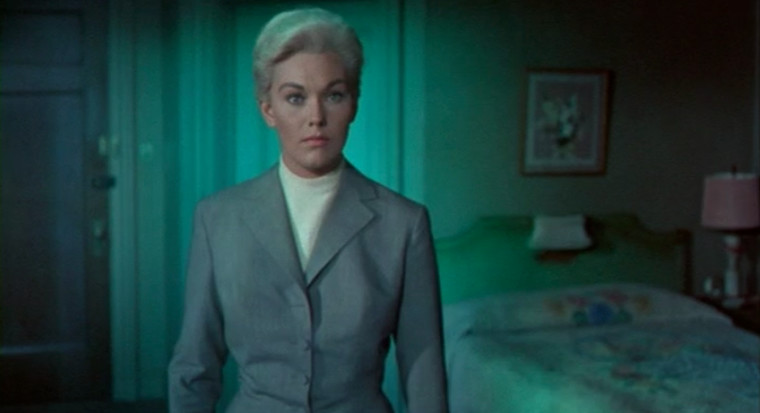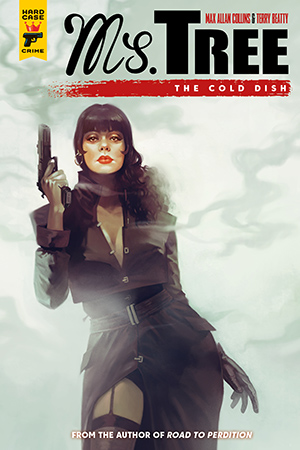The third Ms. Tree collection is out today from Titan. It goes back to the beginning, including Ms. Tree’s first black-and-white origin tale from Eclipse Monthly, and continues on with the full color Eclipse issues that follow. Read about it here.
The latest book giveaway is now over and ten copies each of Fancy Anders Goes to War and The Many Lives of Jimmy Leighton are in the mail to the winners. Thanks to everyone who participated in this last MAC giveaway of 2021.
For those of you who are considering picking up copies of either Fancy or Jimmy – and I hope you will try them both – here’s a gentle reminder: you won’t find them in a brick-and-mortar store. These are, for now at least, exclusively available on Amazon.
Reasonably priced, I should add: Fancy is $2.99 on Kindle and $6.99 as a physical book; Jimmy is $3.99 on Kindle and a mere $8.99 as a physical book. Both are nice-looking books, too, with lovely Fay Dalton covers. Right now Fancy is sitting at Amazon at 7 reviews (and 24 ratings) with a 4.4 average. Jimmy has a mere three ratings and two reviews, although the rating is five stars.
I’m a little flummoxed by the lack-luster number of ratings for Jimmy, particularly after Dave Thomas and I have done so many podcasts and online interviews in support of it. A possible problem is that the interviewers (understandably) use the opportunity to talk to Dave about SCTV.
Anyway, I can use your help on both of these, as NeoText is a new and unconventional company, with its emphasis on e-books and developing properties that have movie and TV potential. So if you’ve read and liked either or both of these novels, please at least stop by Amazon and provide a rating, and better yet a review, however brief. If you like my work, NeoText provides a venue that seems particularly nurturing.
Wolfpack is similarly a very positive venue for me. They have some fun things coming where the John Sand series by Matt Clemens and me is concerned, and are going to be a big part of the 75th anniversary of Mike Hammer with a new (non-Hammer) novel by me from a Spillane screenplay and a collection of Mickey’s three middle-grade (kid) novels, including one previously unpublished. And there may be a collection of his crime novellas as well.
Yes, I know I harp on it. But buying these NeoText and Wolfpack books, and rating/reviewing them, will greatly impact how much – and whether – I can continue to bring you my brand of crime/mystery entertainment, which many of you are nice enough to say you enjoy.
Something else I frequently harp on (this will not be a harangue, I promise) are reviewers and readers who complain about my detailed descriptions of clothing and settings – and descriptive passages in general. The peculiar thing about such complaints is that I am often complimented on my fiction being lean and fast-paced, which seems at odds with this other view.
Here’s the thing: I see myself as creating films on paper. I don’t mean, necessarily, that I’m trying to create something that can become a movie, although that’s fine with me – I can always use the money. I simply consider what I do to mirror filmmaking – and this view has become more pronounced since my time working as an indie filmmaker.
The obvious parallel might seem to be “director,” and that holds up in the sense that a film director (good ones, anyway) pull everything together, both before, during and after production. As Stephen King said (I paraphrase), “Movies are the least efficient way to tell a story known to man. Also the coolest.”
I don’t see myself as the director of a novel, however, but as the everything of a novel – wardrobe, lighting, location, casting, acting, and oh yes script. This relates to my obsession with controlling the narrative and to make the reader not an equal collaborator in the process. Some fiction writers desire a major level of collaboration from readers. That’s fine – perfectly okay. But my goal is to give readers – much as filmgoers at a movie – a shared experience. For them to “see” the same novel that I did.
Obviously that’s impossible – readers are by definition collaborators. They have to be. But, as I’ve said, sometimes my play (moving from film to theater in my tortured analogy) is performed on Broadway and sometimes at the Three Mile Island Community Playhouse.
This is, improbably, leading up to a brief discussion of two of my favorite movies – two terrific movies that I watched over the weekend because I had purchased new 4K Blu-rays of them: The Sting (1973) and (my favorite film) Vertigo (1958).
What The Sting and Vertigo have in common is Edith Head, costume designer. The costumes in both films are carefully designed to reflect the characters who wear them – no, not just “carefully,” but “brilliantly.” The Sting makes that point overtly as the complicated ruse the con men stage is essentially a play they mount, right down to costumes and characterizations (and props and sets). The production designer on The Sting used only a few real locations (in Chicago and Los Angeles) and instead mostly utilized the Universal backlot where the look could be controlled. The music, wrong by several decades but absolutely perfect, was used as mood-setting connective tissue under mostly silent scenes, often with establishing shots – much as descriptive opening paragraphs in novels function.
In Vertigo’s pre-production, Kim Novak – about to deliver a great performance that idiot critics in the ‘50s couldn’t discern – was upset about having to wear gray, pale make-up and such an near-platinum hair color. She didn’t understand that her director – Alfred Hitchcock – wanted to make a ghost out of her, a dreamy presence emerging from San Francisco fog. Edith Head went to Hitch with a list of Kim’s preferred colors, and Hitch said, “She may wear any color she likes as long as it’s gray.”

The director also saw to it that the color green – the other color associated with Novak’s Madeline persona – be used throughout the film, often subtly. At times this is in Novak’s wardrobe, and even the color of her car. But also in an inquest’s dreary setting, where a few touches of green intrude significantly. In the scenes in Midge’s studio, where Scotty goes for comfort and friendly mothering, the many items representing the inhabitant’s artistic interests include a ghostly green mask of a beautiful woman, facing away from the room. It’s just a touch. You can watch the film five times and not notice it. But it’s there.
Now, I don’t have music to underscore things like Hitchcock does – I can mention songs playing in the background of a scene and I suppose that’s as close as I can come; lucky Hitch had Bernard Herrmann to create the single greatest film score of all time. And Hitchcock could choose Saul Bass for the opening credit sequence, whereas only rarely have I had a say in my book covers. Even a powerful director like Hitch couldn’t control exactly what Bass and Herrmann came up with, of course. But Hitchcock knew who he was choosing – knew what he was after.
Hitchcock was controlling. I am no Hitchcock, but I am just as controlling. I believe that wardrobe reveals character; so does where that character lives. Colors invoked are important. So is weather, no matter what Elmore Leonard thought. The things I choose to describe about setting are not random. They intend to create mood, among a dozen other things.
I could talk about Vertigo for hours and some day I may write about it in depth, much as I have Kiss Me Deadly, which is my second favorite film. (Others, as you may recall, include Chinatown, Gun Crazy and Phantom of the Paradise.)
This is not to say that in watching a movie we all have the same, exact experience. But we are exposed to the same data, and the way that data is presented limits the ways it can be interpreted.
Sad but interesting story about Cinemax with many Quarry references….
Dave Thomas and I talk about The Many Lives of Jimmy Leighton here.
M.A.C.
Tags: Fancy Anders, Fancy Anders Goes to War, Ms. Tree, Ms. Tree: The Cold Dish, New Releases, The Many Lives of Jimmy Leighton








I find it absolutely absurd that some readers find you too wordy. One of the reasons I love your work is because you cut out the fat! You give the reader what they need but I’ve never found you overly detailed. If a reader wants that try a famous fantasy author.
Also, I too love Vertigo. Love! It would be great to read more of your thoughts on the film.
Has anyone else had issues with the printing on the new Ms. Tree trade? I got my copy in the mail yesterday only to have several pages fall out unbound while other pages were printed upside down. I submitted a request for an exchange and just received the new one- and it has the same problems. This is ordering from Amazon. Not sure if it’s a print-wide issue or just in some of the copies that made it to Amazon…
I hope to see that Vertigo essay sometime. (I’ve never noticed the green mask!)